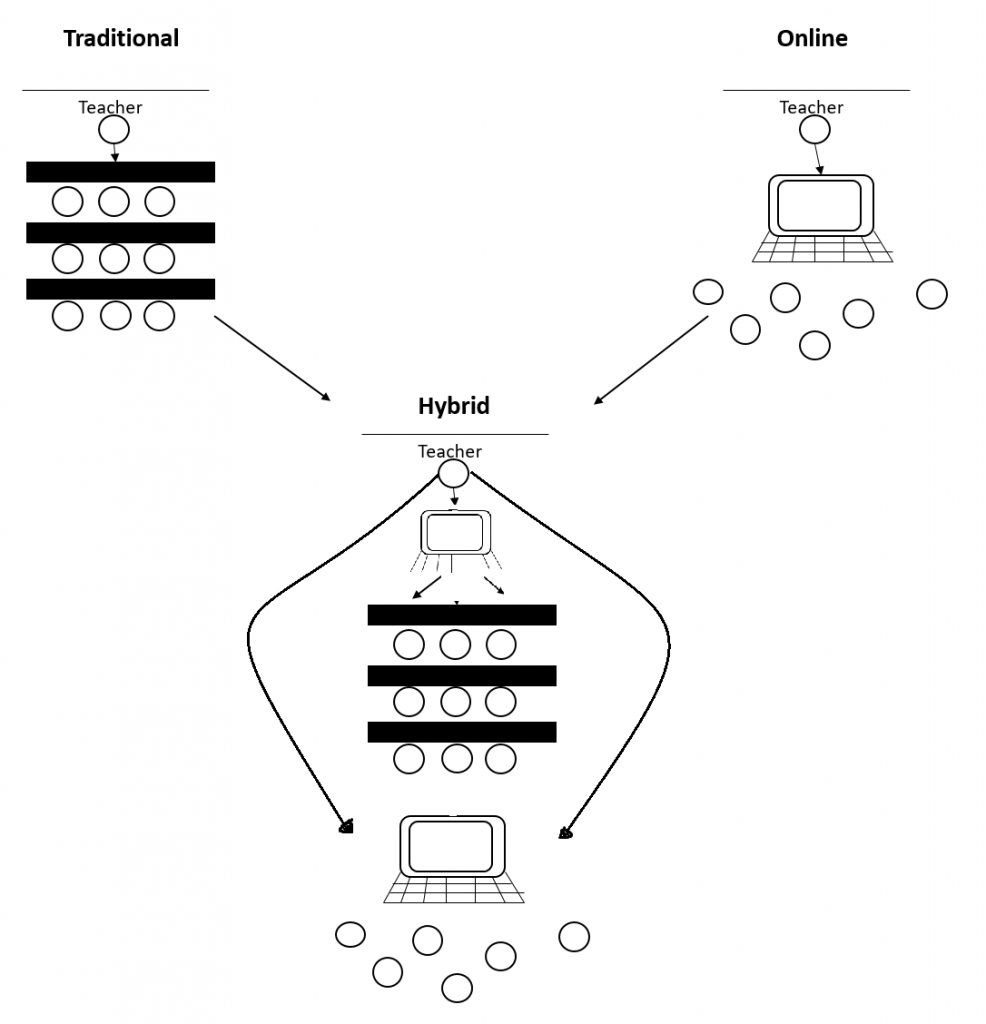3.3 Reverse Engineering the Classroom
Reverse-engineering in the classroom is the physical and pedagogical components of teaching and learning. With respect to design inside the classroom, there are some educational implications that should be considered when reverse-engineering the physical space:
- Plan instruction based on social and physical characteristics.
- Focus on student safety and security.
- Organize and monitor access to the required material and supplies.
How is the classroom physically changed? Santrock, Woloshyn, Gallagher, DiPetta, and Marini provide some models relating to the physical characteristics of open concept and multilevel learning[7].

Along with the physical environment, the pedagogical details come into focus within reverse engineering. Flipped teaching, or the flipped classroom, is a theory from Jonathan Bergmann and Aaron Sams who set the groundwork for teaching and assessment where homework is done in class, and classwork is done at home. They suggest that the roles are reversed in terms of teaching, such as watching a video for homework the night before class, then coming in to share a discussion about the video[8]. It flips the classical model of watching a video in class and doing an assignment at home, to watching the video at home and discussing the video in class the next day. This sets a precedent for learning that can probe deeper into the student’s competency. For example, students can prepare for discussion, after watching the video the night before and engage with other students in the class. Furthermore, with reverse engineering to the physical classroom (like with an offset style), the video assignment can be the discussion within divergent groups of individuals. This can enhance further conversations on other topics.
Some implications for flipped teaching relate to concepts of powerful, experiential, and interdisciplinary learning through wide-ranging engagement with the content:
- Powerful: Students are free to craft their own learning.
- Experiential: Pragmatic experience connected to the real-world.
- Interdisciplinary: Finding connections in other learning streams.
The enhancement of educational technology opens new doors for reverse-engineering the classroom. Reverse engineering introduces a new model of hybrid learning that uses the mix of in-person and technology-based education to accommodate learners with more flexibility[9]. Hybrid learning can incorporate these models of the reverse-engineered classroom to accommodate a wider scope of students integrating online education and collaboration through assessment and discussion.

One of the issues regarding technological education is the growing digital divide with technology. Online access is still an issue for many families or adults who want to pursue education, but do not have the technical means. Atif and Chou outline the current digital divide within education and suggest the need for digital citizenship through hybrid educational models toward inclusion within education[10]. If it is examined through an experiential lens, the freedom provided to students is expanded with a hybrid model, given the choice to choose online or in-person education. Someone who lives close to the school or does not have online access can still benefit from learning through an in-person form. At the same time, the online format can be used to enhance access to more individuals. This is a theme that will be more salient as we head into the middle part of the 21st Century. particularly because of the social-distancing measures of the Covid-19 pandemic that began in 2020. Observe the slides below to develop a deeper understanding of tools for knowledge, cognition, and symbolism in learning.

